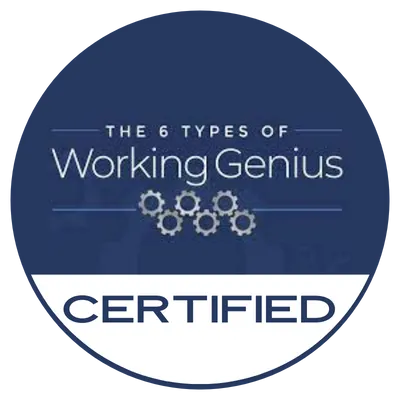
Enterprise Value as a VTO Goal
The top goal for a company of any size should be to increase Enterprise Value, not simply Revenue and Profit. Company rocks should be directed toward enhancing the value of the business. As a business becomes more valuable, not only do revenue and profit grow, but the core business drivers become healthier. This creates sustainability, increased opportunities for employees, and a greater impact.
As we head into Q3, my question to every leadership team is this: Are you tracking the enterprise value of the company? Is this on your VTO?
Wikipedia defines enterprise value as an economic measure reflecting the market value of a business. Simply put, value is calculated by multiplying the quantity of profit (EBITDA) by the quality of the business (the multiple). Of course, in more sophisticated terms, value is calculated by discounting future cash flows. (For more on this, read "The Impact of Quantity and Quality on Business Valuation.")
Enterprise companies know and track their enterprise value. You can look up the value of any publicly traded company by multiplying its stock price by the number of shares.
Unfortunately, most small and medium-sized companies don’t know the value of the company, nor do they manage to it. They focus their VTOs (Vision Traction Organizers for my friends who haven’t implemented EOS) on driving revenue and profit. While these metrics are important, they only reflect one-half of the value equation.
An Example of Two Similar But Very Different Companies
Consider the following example of two service companies:
Company A has $5 million in EBITDA. They have a great employee team, loyal clients, and a stellar reputation. While most of their clients use their services every quarter, none of the revenue is under contract. Clients can cancel at any time. There is one incredible client that brings in 35% of the revenue. In the sales team, the company has a rock-star salesperson who lands the lion's share of the deals. The owner shows up every morning at 7 am and leaves at 7 pm.
Company B has the same $5M in EBITDA. They also have a great employee base, loyal clients, and a stellar reputation. All of their revenue is under contracts that auto-renew each year. Many of the contracts have bundled in hardware to create multi-year agreements. No single client is responsible for more than 10% of the revenue. There are 10 people on the sales team. Seven of them are above quota. The company has implemented EOS and has a full leadership team. Last year, the owner took her family to Europe for three weeks, and the business didn’t skip a beat.
Company B is much more valuable than Company A because:
- They have quality recurring revenue that is under contract.
- They are not dependent on a single client or salesperson.
- They have a management team that is not dependent on the owner.
In this hypothetical example, Company A might have an average multiple of 4X and be worth $20 million. Company B might lean towards a premium multiple of 8X and have an enterprise value of $40 million. These two companies are definitely not equal.
Beyond the enterprise value, think about the quality of Company B. Their profit is more predictable. Where Company A’s sales will tank when their rock-star sales rep leaves, Company B is not afraid of a salesperson leaving. The same goes with clients. If Company A’s largest client decided to exercise their right to cancel their “contract,” the revenue and profit would tank. Company B is ready to grow.
If both of these companies simply tracked revenue and profit on their VTOs, they might not see the forest through the trees.
Three Steps to Grow Enterprise Value
Here are three steps any midmarket company can take to lead and manage around Enterprise Value.
1. Measure Your Enterprise Value
If you don’t know your enterprise value, you can find it out in less than 20 minutes. Yes, you read that correctly. New software benchmarks your company against other companies from your industry, connecting to a database of industry multiples and 65,000 recent exits. Simply complete a 20-minute survey with 35 questions about your company. Then schedule a time to review the results.
Right now, the first valuation is free. It’s completely confidential. There is absolutely no excuse not to do this. You can get started at [Value Creation Engines](https://value.valuecreationengines.com).
2. Develop a Value Creation Plan
Next, you need to get your leadership team thinking about enterprise value. The best way to do this is to develop a Value Creation Plan. As your team works through the core value drivers for the company, not only will they create an action plan aimed at creating value, but they will also begin to think more like entrepreneurs.
3. Execute the Plan
Now the fun begins. Depending on the size of the company, you can get employees engaged in creating value. Taking a cue from Jim Collins in "Good to Great," you could stand up councils of employees from various parts of the business to develop and deploy ideas around strategic innovation, revenue growth, and profit growth. Together, these councils work to increase the value of the company while improving employee engagement and creating a future pool of ready-to-go leaders.
Quarter to quarter, you can track the improvements as you measure the growth in the enterprise value of the company.
Get Started
It all begins with a decision to lead and manage the company around the creation of enterprise value. Then, you simply need to put a stake in the ground by understanding the current value of the company and the factors that drive that value. You can get started right now at [Value Creation Engines](https://value.valuecreationengines.com)

VTO/Vision Traction Organizer and related terms are registered trademarks of EOS Worldwide.
FREE BUSINESS VALUATION
Large Call to Action What is Your Business Worth?
You can Discover the Value of Your Business in Less than 20 Minutes!
Join 70,000 business owners and get your score on the 8 Factors That Drive Your Company’s Value, a comprehensive analysis of your score and a detailed action plan for how to improve your score on each.

DISCOVER HOW YOUR COMPANY CAN UNLEASH STRATEGIC INNOVATION
Attract, engage, and retain top talent
Integrate new technologies like AI
Build competitive advantage
Create profitable growth
"Wow! This is incredibly powerful! My integrator needs to see this right away.
Chris C.
Visionary and CEO


We run our business on EOS
We run our business on EOS



